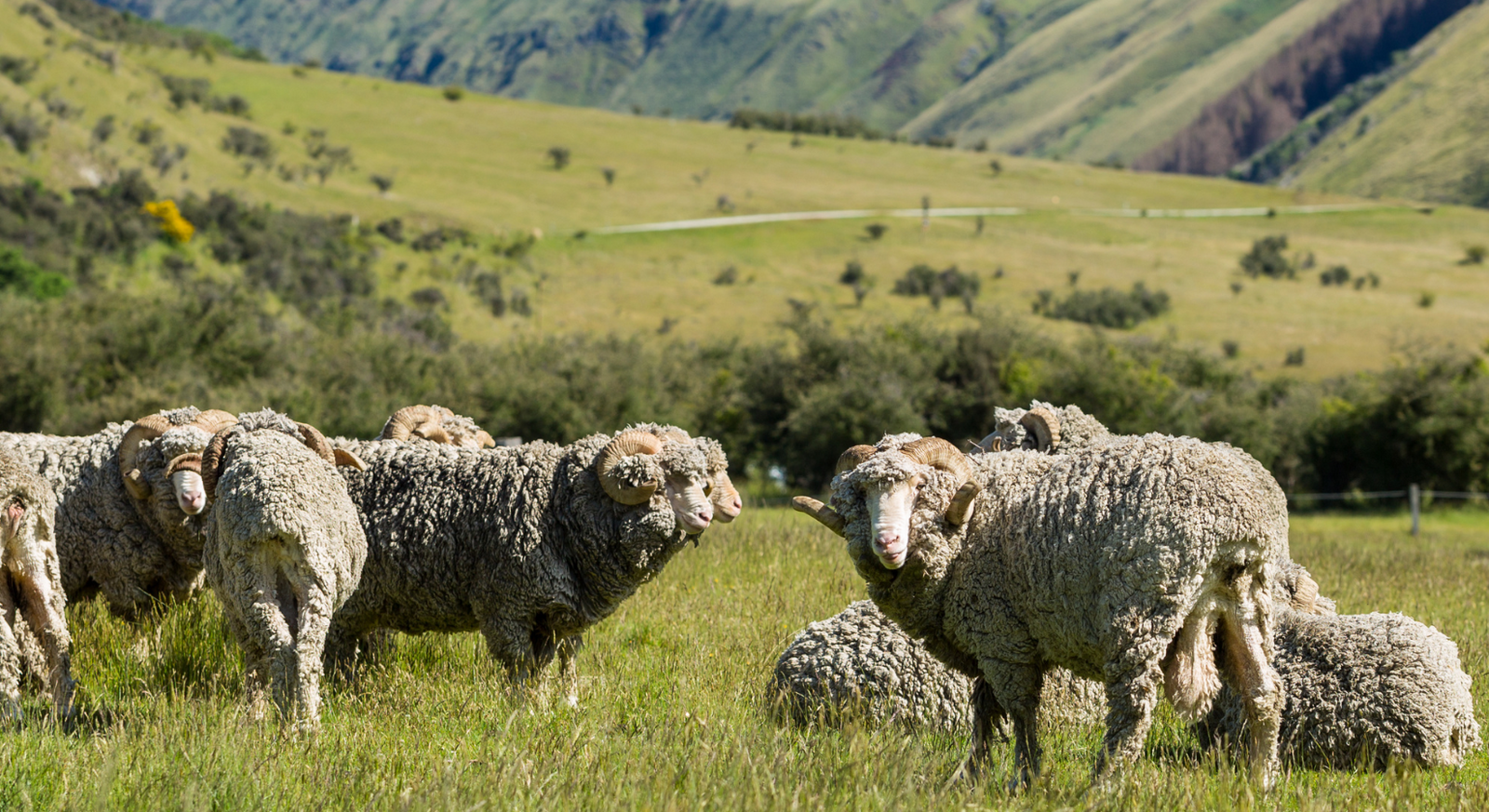Merino Wool for Motorcycle Camping
Article By Ben Williams
Brands we carry
Motorcycle campers and riders know that comfort, and versatility in clothing are just another step to making your trip more enjoyable. Why put yourself through the misery of having to keep wearing wet clothes, when you don't have to. Trust me, being wet to the core while riding sucks, being cold and wet in your tent is even worse.
When it comes to choosing the right materials for your base layers, few options can match the exceptional qualities of merino wool. In this article, we will dive into the key reasons why merino wool is the ideal choice when camping and riding. Furthermore, we will explore the science behind how merino wool keeps you dry, cool, and warm, all at the same time.
Merino wool, derived from the Merino sheep breed, is a unique fiber known for its remarkable properties. Unlike traditional wool, merino wool fibers are finer and softer, making them highly suitable for use in garments. Here's why merino wool stands out:
Thermoregulation
Moisture Management
Quick Drying
Odor Resistance
How Merino Wool Works Its Magic
Understanding how merino wool keeps you dry, cool, and warm is essential to appreciate its suitability for motorcycle camping and riding.
Thermoregulation
Merino wool's ability to trap air within its fibers serves as natural insulation, keeping you warm in cold conditions. Simultaneously, the breathable nature of merino wool prevents overheating by allowing excess heat and moisture to escape. Merino wool fibers have a fine, crimped structure with numerous air pockets between them. These air pockets act as natural insulators.When it's cold, these air pockets trap warm air close to your body, providing insulation and helping to retain heat. This minimizes heat loss and keeps you warm in chilly conditions.
So how can merino wool keep you cool and warm at the same time? Effective thermal regulation is not just about retaining heat, it's also about managing moisture, and Merino wool excels in moisture management.
Moisture Management
One of the most notable features of merino wool is its ability to wick moisture away from your body. Unlike cotton, which tends to trap moisture, merino wool actively transports sweat away, keeping you dry during rides, around camp, and even in your sleep. Merino wool fibers have a unique structure that allows them to absorb moisture from your skin and move it to the outer surface of the fabric.
This process, known as capillary action, occurs because merino wool fibers are hygroscopic, meaning they attract and hold water molecules. Once saturated, the water is gradually released into the air. As moisture evaporates from the fabric's surface, it requires heat energy, which is drawn from your body. This cooling effect helps keep you comfortable when it's warm.Your body generates different levels of heat and moisture in various areas, so if you sweat more on your back, it will keep that area cool as it absorbs and evaporates that moisture. Compared to your arms or chest that are cooler and not sweating, so it traps the heat coming from your body to keep those areas warm.
In a nutshell, if you're in a cold environment, merino wool will trap warm air close to your body. If you're in a warm environment, it will allow excess heat and moisture to escape, keeping you cool.
Quick Drying
Merino wool fibers have tiny scales that cover the surface. These scales create capillaries or microscopic channels along the length of the fiber. When moisture, such as sweat, comes into contact with merino wool, these capillaries wick the moisture from the core of the fiber to the outer surface. Moisture molecules within the fabric undergo a process called diffusion, where they move from areas of higher concentration to lower concentration. This promotes the even spread of moisture throughout the fabric. Once moisture reaches the outer surface of merino wool, it is exposed to the surrounding air. The porous structure of merino wool promotes airflow around the fibers, facilitating the rapid escape of moisture vapor into the atmosphere.
With all that being said, its a quick drying fabric that will dry out even if youre wearing it.
Odor Control
Merino wool's resistance to odor is due to its natural antimicrobial properties. Bacteria, which cause odors, struggle to thrive on merino wool, resulting in fresher clothing even after days of use. This means it is great for multi-day motorcycle camping trips.

What's the catch?
So we've hyped up Merino wool, so let's bring it back down to Earth and talk about the downsides of Merino wool.
While merino wool offers numerous advantages, it's important to recognize that no fabric is without its downsides. When comparing merino wool to other materials, here are some of the potential drawbacks to consider:
Cost
Merino wool garments tend to be more expensive than those made from synthetic or conventional wool fabrics. The high-quality merino wool required for performance wear can be costly to produce.
Durability
Merino wool, while strong for its fineness, is generally less durable and more prone to damage from snags and abrasion in high wear areas like knees and elbows compared to some synthetic fabrics like nylon or polyester. This can be a concern for rugged outdoor activities when using as an outer layer. Something to keep in mind is looking at the percentage of merino wool in the garments. Some mixed with polyester and other synthetics help strengthen the item while still retaining all the godly qualities of merino wool. For example: Darn Tough socks have a lifetime warranty, even if you wear a hole in them. When looking at the materials for their wool socks, most contain a mix of synthetic and anywhere from 30-80% merino wool.
Shrinking
Merino wool can shrink when exposed to heat and moisture, especially if not properly cared for. Washing merino wool in hot water or drying it on high heat can result in shrinkage.
Absorption of Odors
While merino wool is naturally odor-resistant, it can absorb odors from the environment or other clothing items. These odors may not be as easily washed out as they would be from synthetic materials.
Weight
In some cases, merino wool garments may be heavier and thicker than their synthetic counterparts, which can be a concern if youre looking to really pack ultra light for your motorcycle or type of riding.
Longer Drying Time
But you said Merino wool is quick drying!? While merino wool does have good moisture-wicking properties, it may take longer to dry than certain synthetic fabrics, especially in extremely humid conditions to dry out. It dries out much faster than cotton but takes about 50% more time to dry out than a polyester shirt. Lots of variables here, but my Under Armor shirt dried out in 30 minutes while my merino wool shirt took around 45 minutes.
Allergies
Some individuals may have wool allergies or sensitivities. While merino wool is less likely to cause allergies than coarse wools, it's essential to consider potential sensitivities when choosing clothing.
Real World Use
In the world of motorcycle camping and travel, where every piece of gear counts, merino wool's multifaceted nature shines through. For my personal pack, I have a set of Minus33 merino wool midweight base layers I use for sleeping in. These keep me warm in the colder months and when I end up sweating in my sleep (which most of us do) I'm not getting cold because my clothes are soaked.
You know that saying, cotton kills? Ive slept in cotton before while camping and never had an issue, until it got colder outside. I layed up, but got too warm in my bag, started sweating, and then started getting really cold, really fast. Thats the problem with cotton. Its fine until its wet, and then it can be a bad situation. I had to pull off my sweaty clothes and try to put on dry clothes while tangled up in my sleeping bag. I was cold from letting all the heat out, but was warming up now that everything was dry.
I also have a few pair of Darn Tough socks I rotate. Usually a pair for bed, and a pair or 2 for riding in. When I get to camp and we get settled in, I switch from riding shoes to whatever my camp shoes are, and new socks. Its amazing how good you feel and how well you sleep and relax with dry feet. Ill hang up my riding socks to air out overnight so they are ready for the next day of riding.
In the morning Ill change into my riding clothes and swap back into my riding socks, and hang my sleeping layers up to air out while we get ready.
When Im riding Im wearing synthetic athletic wear, mostly polyester. Its a lighter weight than what I sleep in and has decent odor resistance, but not as good as the merino wool, and does a good job of keeping me somewhat cool and dry, as I sweat a lot!

Ultimately, the choice between merino wool and other fabrics depends on your specific needs and preferences. Merino wool excels in many areas, particularly in thermal regulation and moisture management, making it an excellent choice for a sleeping base layer. However, it's essential to weigh these advantages against the potential downsides to make an informed decision based on your intended use and priorities.

